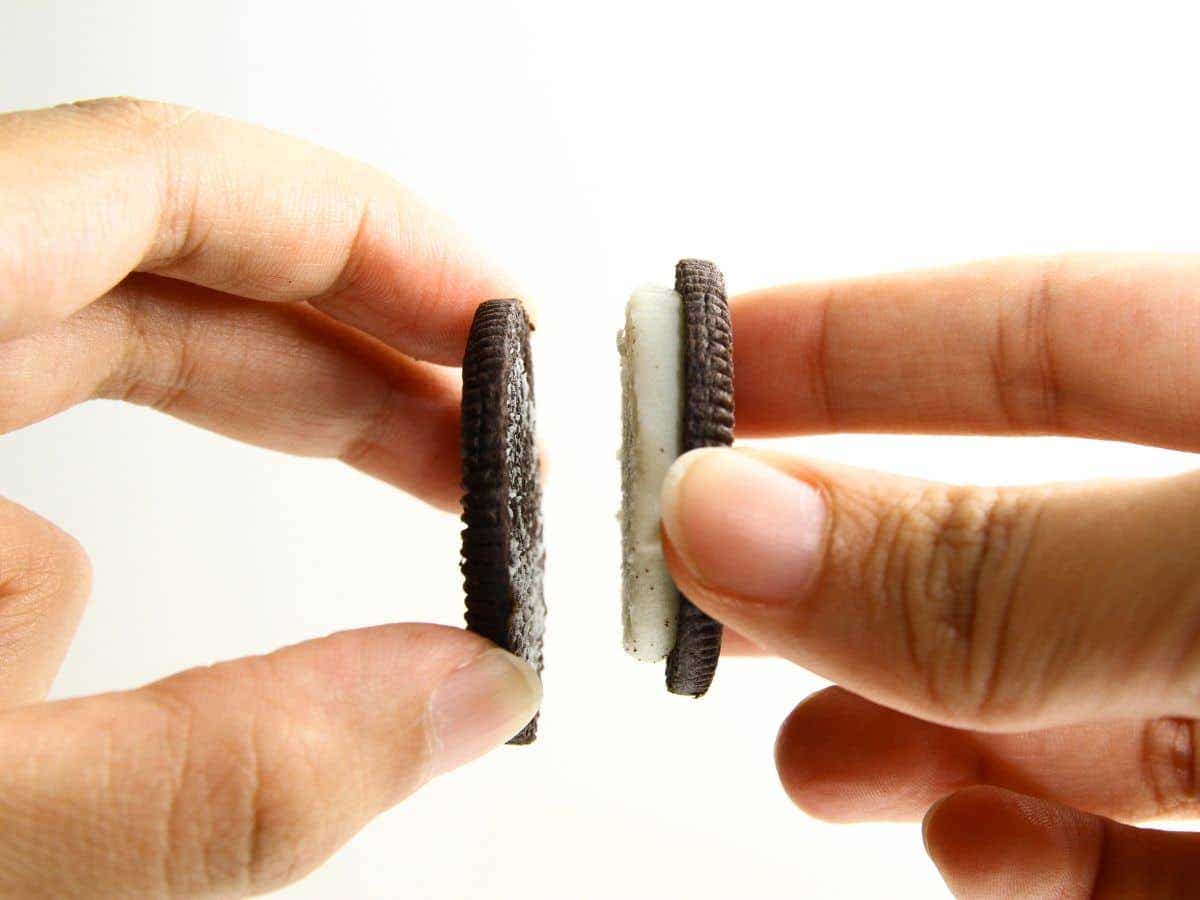Scientists solve the confounding mystery of the Oreo cookie
Findings not only shed light on this age-old mystery but also demonstrate the accessibility and real-world applications of rheology.

Ever wondered why the creamy center of an Oreo stubbornly sticks to one wafer when you twist it open? This seemingly trivial question has captivated the minds of MIT engineers, leading them to explore the fascinating world of Oreo rheology – the study of how the cookie's cream flows and fractures under stress.
Their findings, published in the special "Kitchen Flows" issue of Physics of Fluids, not only shed light on this age-old mystery but also demonstrate the accessibility and real-world applications of rheology.
Rheologists typically study materials using a device called a rheometer. This instrument holds a sample material between two plates, one of which can be rotated while the other remains stationary.
Sensors track the applied force (torque) and rotation (angular displacement) to characterize the material's flow properties. Crystal Owens, a mechanical engineering PhD candidate at MIT, noticed a striking similarity between this setup and the act of twisting apart an Oreo. As she aptly describes in the study, "sandwich cookies present a paradigmatic model of parallel plate rheometry."
The cream acts as the sample trapped between the two "parallel plates" – the wafers. Twisting the cookie replicates the rotation applied in a rheometer, ultimately leading to the cream's "fracture" and separation.
Beyond the Apparent: The Science of Oreo Cream
While Oreo cream may not seem fluid at first glance, it falls under the category of "yield stress fluids." These materials behave like soft solids under minimal stress but exhibit flow when subjected to a sufficient force. Examples include toothpaste, frosting, and even concrete!
Prior to this MIT study, a 2016 Princeton University research confirmed the one-sided cream distribution observed when twisting Oreos by hand. Owens and her team, however, aimed to delve deeper. They wanted to understand the underlying cause of this phenomenon and explore the possibility of manipulating it.
Related Stories:
The researchers meticulously analyzed numerous Oreos, encompassing various flavors (regular, Double Stuf, Mega Stuf) and wafer types (regular, dark chocolate, golden). Each cookie was secured to a rheometer, and the team applied varying degrees of twisting force and rotation, meticulously recording the values required to achieve separation.
These measurements were then used to calculate the cream's viscoelasticity, a measure of its combined elastic and viscous (flow) properties. Additionally, they documented the "post-mortem distribution" – the final resting place of the cream after twisting.
Surprising Findings and Unexpected Twists
Despite their diverse selection of Oreos, the results were remarkably consistent. The cream almost always ended up clinging to just one wafer, regardless of the amount or flavor of filling. This defied the team's initial hypothesis that a larger cream quantity would translate to easier deformation and a more even split.
However, an intriguing pattern emerged when they examined how the cookie's original position within the box correlated with the final cream distribution. Cookies situated on the left side of the box tended to have the cream adhere to the right wafer after twisting, and vice versa.
This suggests that post-manufacturing factors, such as heat exposure or jostling during transport, might play a role. These external influences could potentially cause the cream to slightly detach from the outer wafer, influencing its distribution upon twisting.
Understanding the rheological properties of Oreo cream has far-reaching implications beyond the realm of snack satisfaction. Owens highlights the connection to her research on 3D-printing fluids, which share similar material characteristics with Oreo cream. This newfound knowledge can assist her in designing more effective inks for printing flexible electronics using slurries of carbon nanotubes, which exhibit comparable deformation behavior.
The study finds that there's no perfect twisting technique to guarantee an even cream distribution on both Oreo wafers. However, Owens proposes that modifying the wafer surface texture to be slightly rougher could potentially enhance the cream's grip on both sides, leading to a more even separation upon twisting.
This delightful exploration of Oreo rheology not only unveils the scientific basis behind a familiar snacking experience but also underscores the power of scientific inquiry in unexpected contexts. It demonstrates how seemingly simple phenomena can hold profound scientific significance, potentially leading to advancements in diverse fields beyond the realm of food science.
“There’s the fascinating problem of trying to get the cream to distribute evenly between the two wafers, which turns out to be really hard,” says Max Fan, an undergraduate in MIT’s Department of Mechanical Engineering.
This research was supported, in part, by the MIT UROP program and by the National Defense Science and Engineering Graduate Fellowship Program.
For more science and technology stories check out our New Discoveries section at The Brighter Side of News.
Note: Materials provided above by The Brighter Side of News. Content may be edited for style and length.
Like these kind of feel good stories? Get the Brighter Side of News' newsletter.
Joseph Shavit
Head Science News Writer | Communicating Innovation & Discovery
Based in Los Angeles, Joseph Shavit is an accomplished science journalist, head science news writer and co-founder at The Brighter Side of News, where he translates cutting-edge discoveries into compelling stories for a broad audience. With a strong background spanning science, business, product management, media leadership, and entrepreneurship, Joseph brings a unique perspective to science communication. His expertise allows him to uncover the intersection of technological advancements and market potential, shedding light on how groundbreaking research evolves into transformative products and industries.



